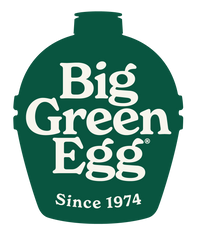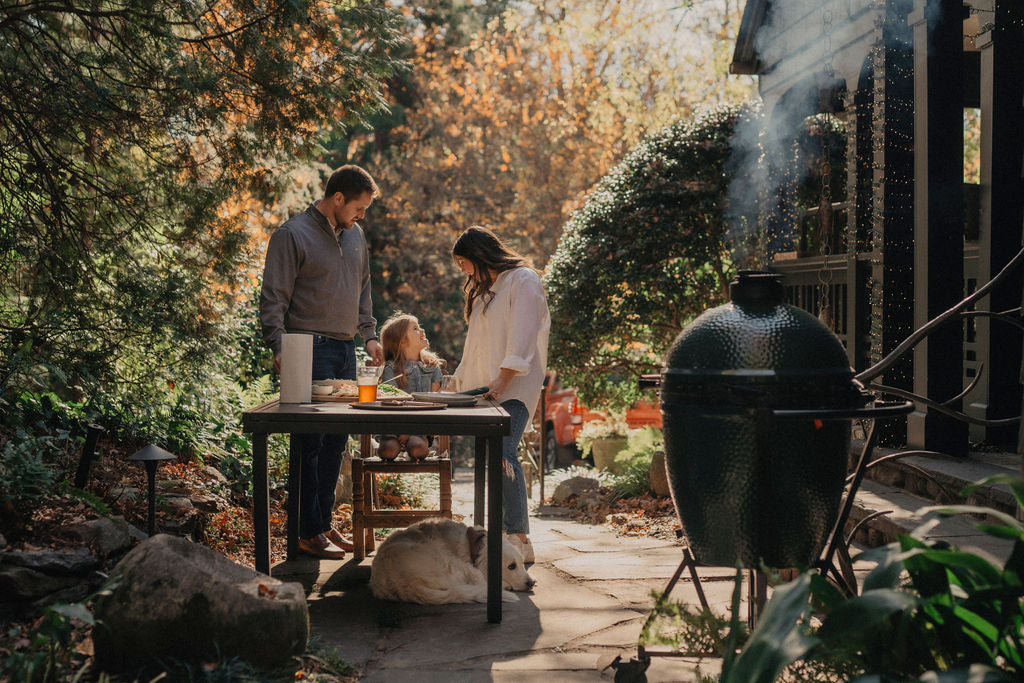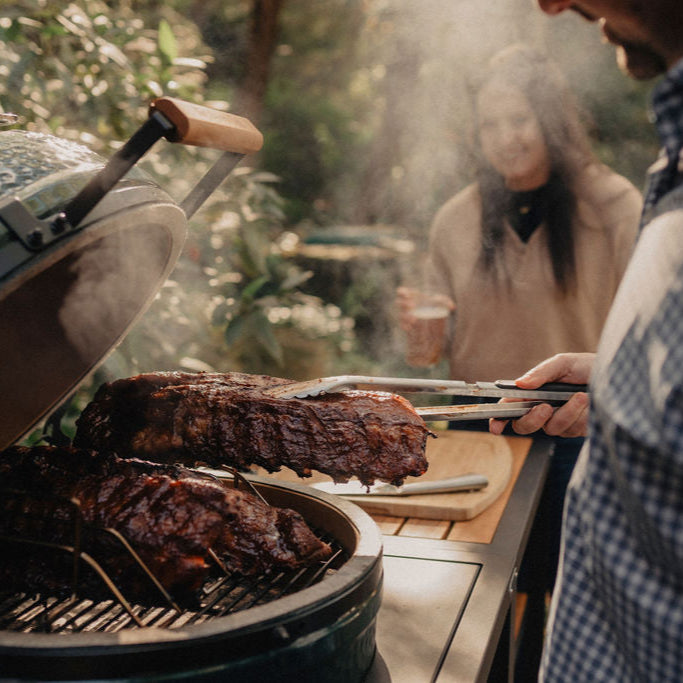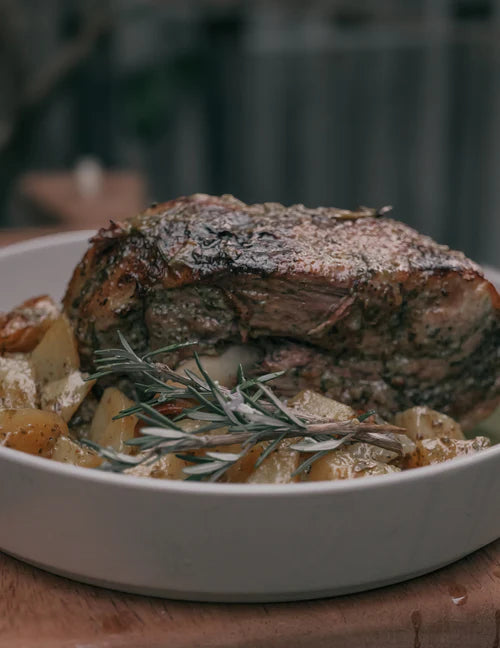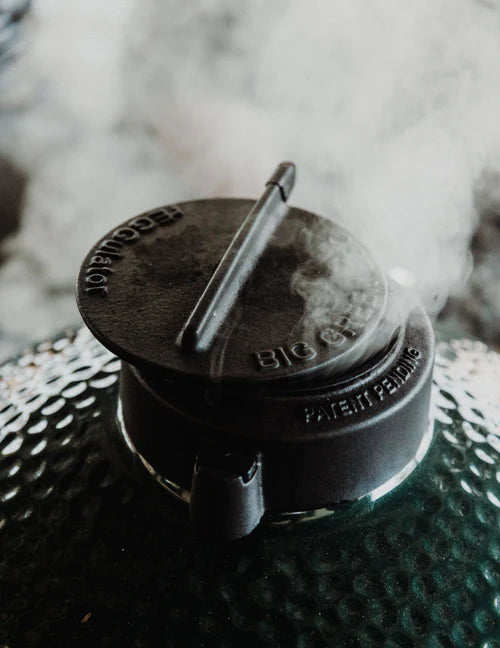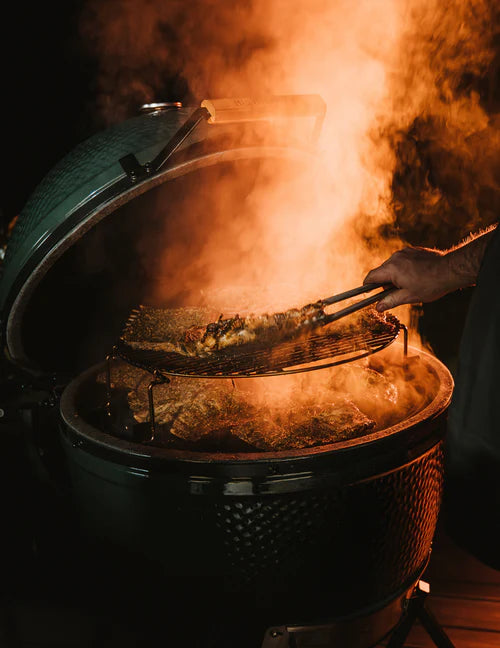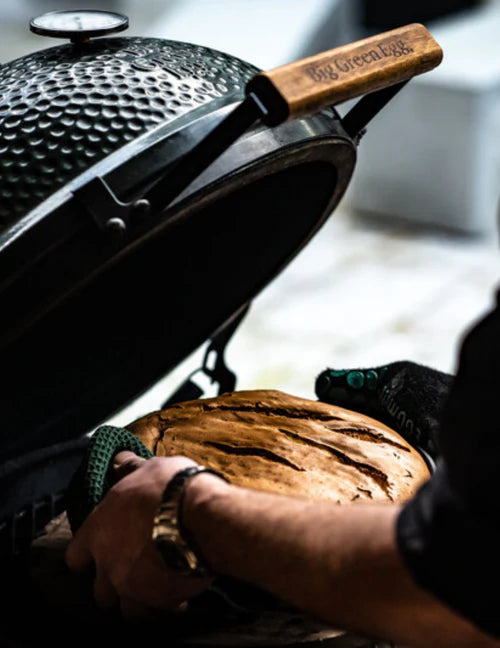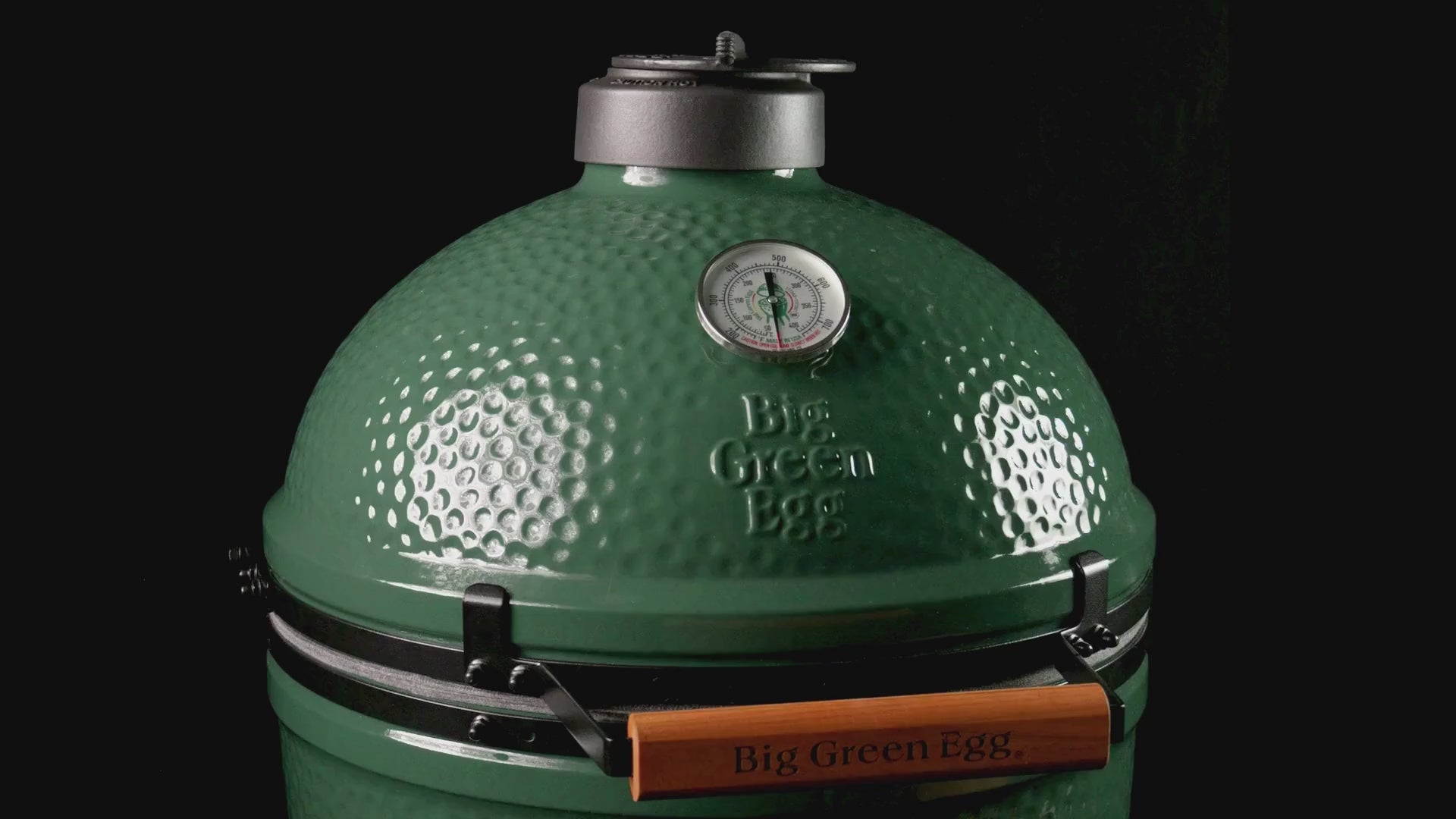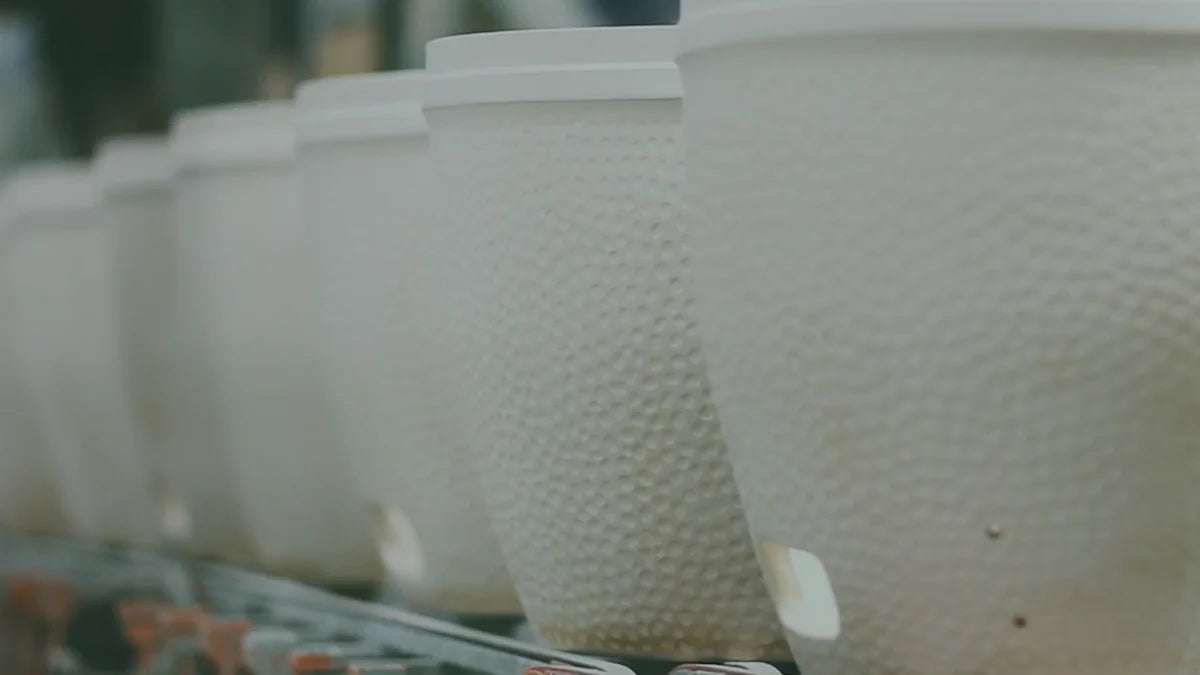Why is it so special?
Shaped like ancient kamado cookers, the Big Green Egg ensures optimal airflow and precise temperature control. With patented technology that’s hard to replicate (although many have tried), it embraces the timeless tradition of live fire cooking, avoiding modern gimmicks. This method honors one of humanity’s oldest culinary practices and is the most organic, eco-friendly way to prepare food.
Let us break the Egg down part by part, keep scrolling.
Countless Ways
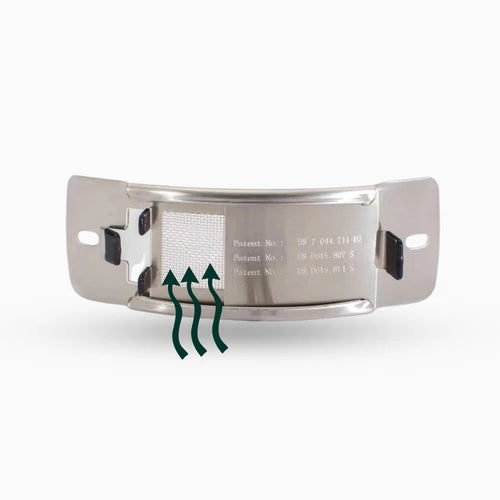
Patented Draft Door
Fresh air enters through our iconic, patented, precision flow draft door. You can accurately control the amount of air that enters the Eggs firebox. Another design feature that is often imitated, never with the same impact.
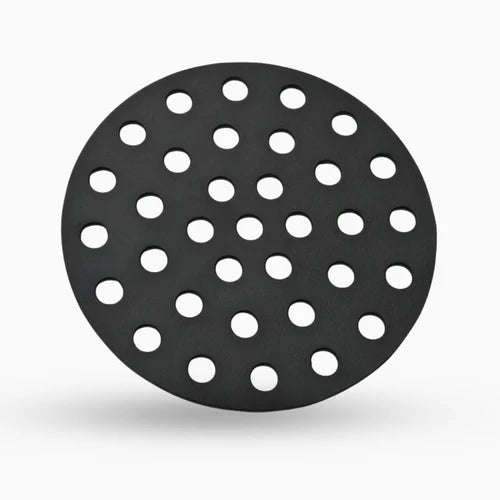
Cast Iron Fire Gate
The Fire Grate sits inside the Firebox. It is perforated to allow airflow up through the Egg and also allowing any ash to drop down for easy removal after cooking. The Fire Grate is included with an Egg purchase.
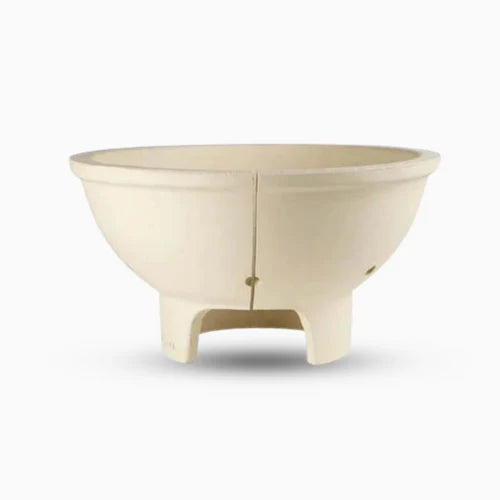
One Piece Ceramic Firebox
Our Fire Box stands up to searing temperatures without breaking a sweat. Founded on our tried and tested technology, we’ve built this design marvel to prevent any kind of breaking or cracking. It also features uniform holes for uniform airflow and convection, for better cooking and better longevity for your cook.
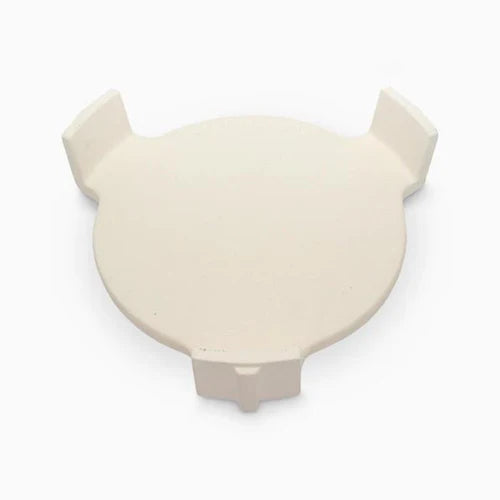
ConvEGGtor®
The part of the Big Green Egg that unlocks endless possibilities. Our convEGGtor® converts your Kamado Grill into a pizza oven, smoker, or slow roaster. Crafted from NSF certified ceramics for optimal temperature control and retention. Competitors frequently attempt to replicate it, without success.
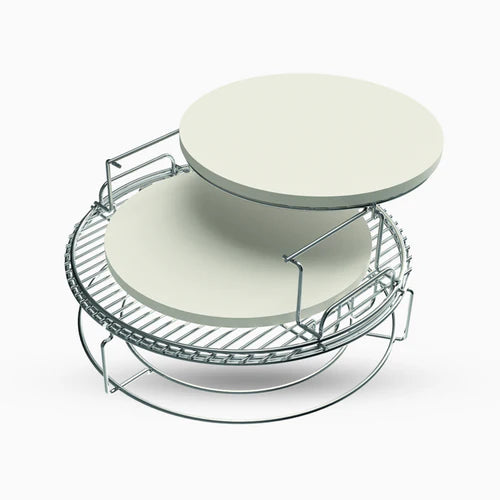
50+ Configurations
If you can think of it, you can cook it on the Egg. That’s because it’s not just a barbecue — it’s a way of life. And just like all ways of life, it’s multi-faceted. You’ve got your searing grids, your roasting trays, your pizza stones, your saucepans. There are over 50+ cooking configurations available to you.
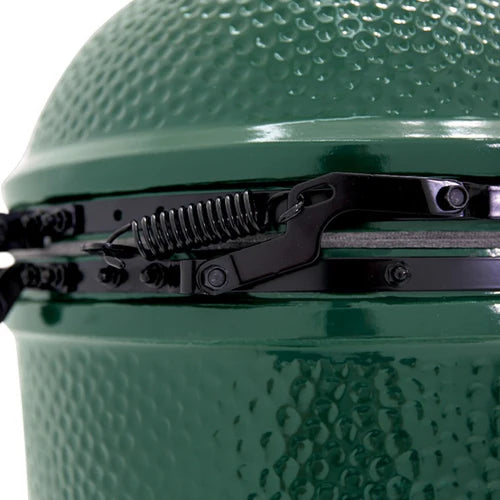
Patented Hinge System
Our patented realignment system ensures your Egg dome aligns perfectly on the base with each lid opening and closing. It's spring-loaded for easy lifting and gentle closure. Unlike stainless steel hinges, we use a rust-proof, specially coated alloy that prevents expansion under heat. With these unique hinges, your lid lasts a lifetime.
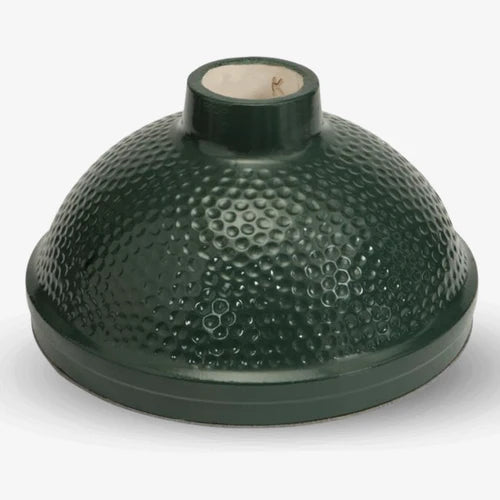
Hand Crafted Ceramics
Our dimpled lids are iconic for a reason: they’ve got the credentials to back up the hype. Each one is made by artisans in our award-winning factory in Mexico, and designed for the ultimate heat distribution experience. You’ll never have to turn your food again. Every Egg has a weatherproof coating tough enough for all kinds of weather and comes with a lifetime warranty.
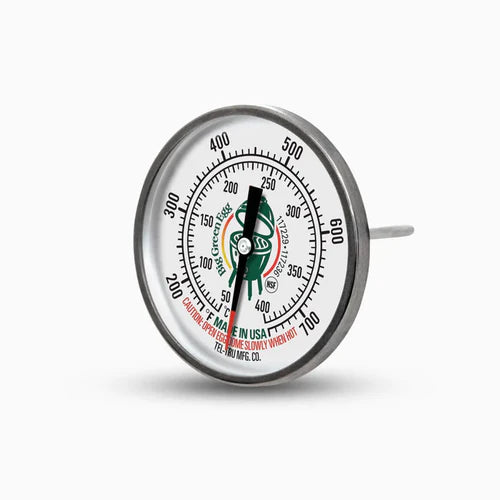
Tel-Tru Thermometer
The weatherproof high-temperature silicon gasket ensures accurate dome temperatures (200°F - 700°F/100°C - 400°C). Tel-Tru thermometers, known for precision, ruggedness, accuracy, and responsiveness, have been made in the US for over 100 years. Calibrate them for long-term accuracy and responsiveness in any outdoor environment on your Egg.
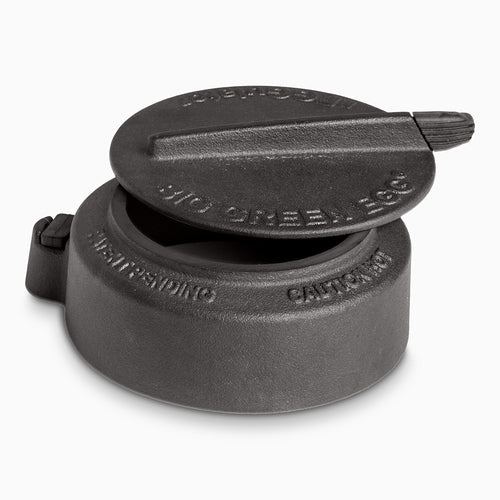
rEGGulator Vent Cap
Introducing the rEGGulator: precise temperature control with weather, rust, and burn resistance. Enhance your cooking experience with improved burn efficiency, faster heat-up and cool-down times, and a variety of sustained temperature settings. Simply close the cap to extinguish your Egg.
